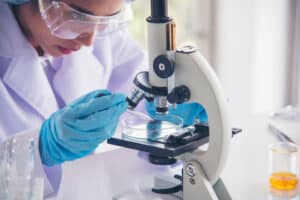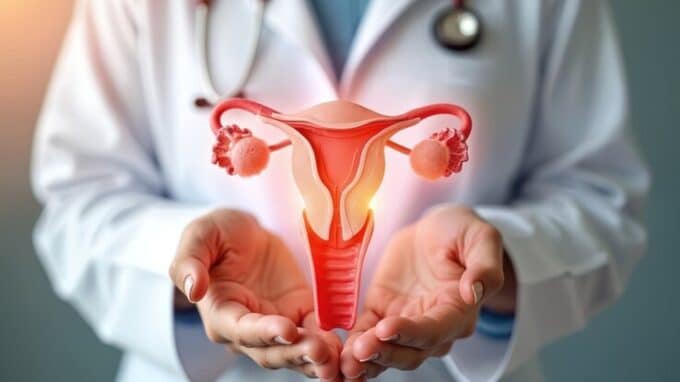Many cells in the inner lining of the uterus carry “cancer-causing” mutations that often occur early in life, according to scientists at the Wellcome Sanger Institute, the University of Cambridge, and their collaborators. The research team performed whole-genome sequencing of healthy human endometrium, providing a comprehensive overview of the frequency and patterns of DNA changes in this tissue. Published in Nature, the work provides insights into the earliest stages of uterine cancer development.
Uterus and Driver Mutations
The endometrium is the inner layer of the uterus, better known as the uterine lining. It is regulated by hormones such as estrogen and progesterone and goes through different stages during childhood, the reproductive years, pregnancy, and after menopause. With approximately 10,716 new cases in 2022, malignant tumors of the uterus (corpus or endometrial cancer) are the fifth most common cancer in women. Most cases occur in the seventh and eighth decades of life. All cancers arise from changes in DNA, known as somatic mutations, which occur continuously in all our cells throughout our lives. A tiny fraction of these somatic mutations can contribute to a normal cell turning into a cancer cell. These mutations are called “driving mutations” and occur in a subset of “cancer genes.”

In this study, whole-genome sequencing was used to better understand the genetic changes in healthy endometrial tissue. The team developed a technology to sequence the genomes of a small number of cells from individual glands in the endometrial epithelium, the layer of tissue that sheds and regenerates during a woman’s menstrual cycle. Using laser capture microscopy, 292 endometrial glands were isolated from uterine tissue samples from 28 women aged 19 to 81 before the DNA from each gland was sequenced. The team then searched for somatic mutations in each gland by comparing them to the whole genome sequences of other tissues from the same individuals. The researchers found that a high proportion of the cells had driver mutations, even though they looked completely normal under the microscope. Many of these driver mutations appear to have arisen early in life, in many cases during childhood.
Developing Cancer May be Present in Us Almost Our Entire Lives
Dr. Luiza Moore, lead researcher at the Wellcome Sanger Institute, said: “The human endometrium is a highly dynamic tissue that undergoes numerous remodeling processes during a woman’s reproductive years. We have identified frequent cancer driver mutations in normal endometrium and shown that many of these events occurred early in life, in some cases even before puberty. Over time, these mutated stem cells accumulate further driver mutations.” Despite the early onset of the first cancer-driving mutations, it takes several decades for a cell to accumulate the remaining drivers that lead to invasive cancer. Typically, three to six driver mutations in the same cell are required for cancer to develop. Therefore, the vast majority of normal cells with driver mutations never turn into invasive cancer. When an invasive cancer develops, it may have been developing unnoticed within us for almost our entire lives.
Dr. Kourosh Saeb-Parsy of the University of Cambridge and director of the Cambridge Biorepository for Translational Medicine (CBTM) said: “It is crucial to know when and why genetic changes associated with cancer occur in order to combat rising cancer rates.” Professor Sir Mike Stratton, Director of the Wellcome Sanger Institute, commented: “New technologies and approaches to studying DNA mutations in normal tissue are providing profound insights into the process of genetic changes that transform a normal cell into a cancer cell. The findings suggest that although most cancers occur at a relatively advanced age, the underlying genetic changes may have started early in life, and we may carry developing cancer within us for almost our entire lives.”




